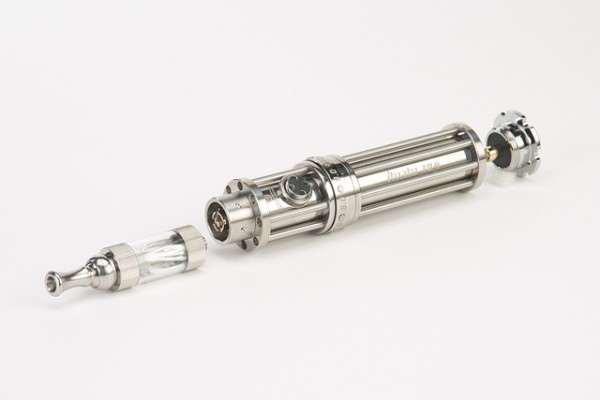Some E-Cigs May Cause Cancer

Some electronic cigarette devices may be delivering carcinogens into the lungs of their users, two new scientific studies suggests.
The studies, scheduled to be published in Nicotine & Tobacco Research later this month, detail how some high-powered electronic cigarette models and a practice liquid nicotine users call "dripping" exposes people to nicotine-laced vapor that potentially carries carcinogens.
It has long been known why smoking traditional cigarettes causes cancer. The intense heat from burning a cigarette down changes the chemical composition of some already very harmful ingredients, producing what experts suspect is some 60 carcinogens which then line a smoker's throat and lung in smoke-residue called "tar."
Unlike their harmful tobacco-based predecessors, electronic cigarettes don't burn their ingredients. Instead, the tiny battery-run devices heat and "vaporize" liquid nicotine, which is then inhaled by the user. This had been the rallying call behind the growing e-cigarette use trend -- that unlike cigarettes, electronic cigarettes cannot cause cancer and do not produce harmful second-hand smoke.
However, according to a pair of new studies, the heating element of some e-cigarette devices may make be making "vaping" -- as the users call it -- more like tobacco smoking than some would expect.
Tank system e-cigarettes, high powered electronic cigarette devices that subjugate bottled liquid nicotine to very high temperatures, can produce formaldehyde -- a known carcinogen. This occurs when the liquid nicotine that tank system users fill thier devices with gets overheated, potentially converting the chemical nature of the vapors produced and creating carcinogens. Formaldehyde was a common accidental product of the "vaping" process in these devices, according to the New York Times.
Another study, which will be seeing publication alongside the first study, details how "dripping" a process where e-cigarette users drip liquid nicotine products directly onto the heating element of a deconstructed device, can frequently create carcinogen-laced vapors.
Both studies were detailed as preliminary findings in the New York Times on May 3.
They are scheduled to be published in Nicotine & Tobacco Research, an Oxford scientific journal, on May 15.
May 05, 2014 04:23 PM EDT





